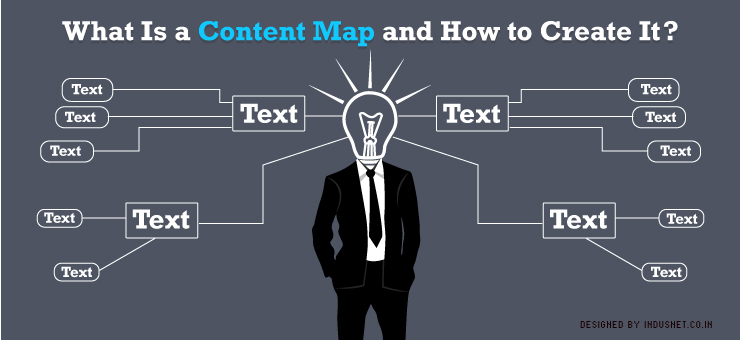
We have all heard about how content is king and we must all pay more attention to it. Content map is a relatively lesser known term but equally important. It is an integral part of a company’s content strategy and involves visual techniques that help you to understand and organize the content of your website. A content map basically helps you to visualize and explore content. The idea is to create a content map that closely fits your company’s goals and that of your clients’. It helps you to discover problems, opportunities, how to link to external websites and discover newer ways to revolutionize your content strategy.
There are several important factors to consider before we draw a content map:
Content map must be simple
Content maps can become unnecessarily lengthy and cumbersome. They will only confuse you further and will not bring any fruits of labor anyway. It is important to keep them short, simple and crisp. A content map should contain the skeleton of your content strategy and should be as functional as possible
Content map should resemble brainstorming
A content map is not the final document about what must be written and published. Instead, it should be looked at as a brainstorming technique that helps you to understand where your content goals are heading and what you must do in order to optimize your content.
Content map is not a site map
You should think beyond pages, headers, blogs and sub-pages. A content map may need to seek the help of external pages as well and that will require you to look beyond site maps. A site map contains all the information that is on the website or should be on the website. A content map tells you how you should go about creating content in order to optimize your website.
Content maps must be simple
Do not use jargon to describe simple aspects of content writing like blogs, paragraphs, copy and text. Instead, call them what they are. Write a content map in an informal manner. It should only tell you where you are heading and must not become a stumbling block itself.
There are several other reasons why you must consider content mapping. Some of the most important goals other than giving you a direction towards your own content strategy are:
• Note taking
Note taking can become quite a task when it comes to attending conferences and seminars. With the increase in webinars and online conferences, you can make a content map available just before you hold a webinar so that your audience knows what you are going to talk about, what will be discussed and what the conclusions are going to be. Note taking is one of the most important goals of content mapping.
• Creation of new knowledge
As discussed earlier, content mapping helps us to discover loopholes, problem areas in content strategy and discover newer ways to optimize content. This helps us to do more research and write better content that will be read by a larger audience. It also helps you to transform tacit knowledge into something that is of organizational value.
• Knowledge retention
Organizational knowledge can be retained and preserved with the help of content maps. Before your valued employees leave jobs or before they retire, you could get them to write content maps so that their knowledge stays with you even after they leave the organization.
• Training
There is nothing more important than training and developing your own employees. Content maps help you to train your employees and make sure that they are equipped well to handle your clients.
By understanding the different features of a content map and the myriad ways in which it can help a company to stay resourceful, one can make use of them in better ways than just optimizing content marketing. Content maps must be drawn for a number of reasons and one of them is to reduce the burden of information. Content maps are skeletons of wider knowledge and thus reduce distraction but emphasize the most important points. If you are unable to write a content map on your own, try and contact professional content writers who will be able to help you with your content mapping.